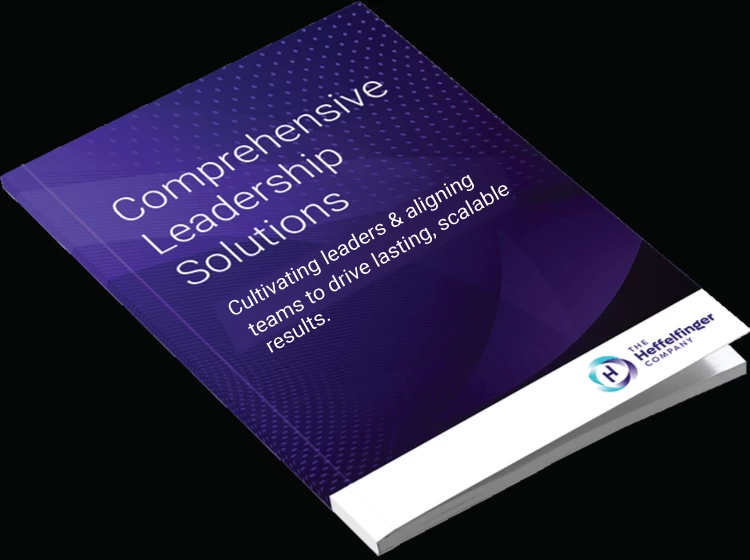“Every conflict we face in life is rich with positive and negative potential. It can be a source of inspiration, enlightenment, learning, transformation, and growth – or rage, fear, shame, entrapment, and resistance. The choice is not up to our opponents, but to us, and our willingness to face and work through them.” – Kenneth Cloke and Joan Goldsmith
While most people would rather shrink back and disappear than deal with workplace conflict, accepting that conflict is a natural part of the workplace dynamic is essential. A major study conducted in 2008 found that employees spend an average of 2.8 hours a week dealing with conflict. With that said, we know that when not handled constructively, workplace conflict can seriously impact morale, productivity, and turnover.
The truth is that the best working environments have some level of conflict that results from team members being comfortable enough with each other to express their thoughts and ideas. For example, a healthy workplace allows people to question and challenge new ideas and initiatives, which can lead to a better outcome. Conversely, a low-conflict environment derived from fear of speaking out is not a sign of harmony, but rather a barrier to growth, innovation, and authentic collaboration.
If we accept that some level of workplace conflict is inevitable – and even desirable in some instances – the question is: how can leaders handle workplace conflict productively?
Top 4 Ways to Approach Conflict Resolution in the Workplace
As a leader, you have the power to learn how to embrace conflict and address it in a productive way. Part of this is finding the courage to approach difficult conversations with skill and empathy. Here are the top four effective ways to approach conflict resolution:
1. Acknowledge and Accept Emotions
There’s no question that conflict can bring up many emotions, especially when things turn personal. Before conflict can be resolved, it’s important to take a breather to acknowledge your own feelings as well as the feelings of others involved because it allows you to approach the situation with a clear head and reduces the chances of your emotions getting the best of you. It also allows you to empathize with how others may be feeling, so you can help navigate the problem in a way that benefits everyone. Some common emotions that come up during conflict are feeling defensive, angry, frustrated, or nervous.
2. Approach Issues as Problems to be Solved
Not every problem rises to the level of conflict. Many times, an interpersonal issue is as simple as two people having different ideas about how to handle a task. In other cases, the issue stems from a lack of understanding of what the other person is saying. By approaching these types of problems as a puzzle to be solved, leaders can create a more positive environment.
For example, imagine two project managers are assigned to co-lead a high-stakes client initiative. One believes he should take the lead because he has been working with the client for a longer period of time. The other insists she should lead because she just completed a similar project with great success. Both have valid perspectives, but neither is willing to compromise. In this situation, there’s no clear right or wrong answer, but a leader needs to redirect focus on the fact that what matters is delivering the best outcome for the client, not individual recognition.
3. Communicate Transparently
One of the most effective ways leaders can resolve workplace conflict is by modeling direct, honest communication. When tensions rise, it’s common for people to default to avoidant or passive behaviors, but when a leader steps in with clarity and composure, it sets a powerful tone. For some leaders, it is a good idea to review what you will say before the meeting so you can be sure to speak with intention rather than emotion. It’s important that your words are both thoughtful and truthful because people can tell when someone is being genuine and are more likely to respond in a positive way. Your openness can help others to see that it is safe to share their thoughts, listen to each other, and rebuild trust.
4. Settle for a Resolution When a Solution Isn’t Possible
Resolving interpersonal conflicts benefits the organization, teams, and individuals because it helps build a culture of trust. Guiding resolutions can also enhance your position as a leader, as employees look to you for support and guidance. With that said, it isn’t always realistic or necessary to fully solve every tension or conflict between two people. What’s important is to guide the situation to a resolution where each party feels that they were heard, their dignity is intact, and they are ready to let the conflict go for the sake of the team.
Remember, conflict is natural, and it’s okay for people to disagree on how to approach a project or workplace issue. The trick is to approach conflict with the goal of resolving issues in a way that supports the greater good of the team and the organization.
Uplevel Your Influence with More Human-Centric (Soft) Skills
What's your style? We all have unique ways of dealing with conflict, shaped by our experiences, personalities, and work environments. Understanding your conflict style is key to improving communication, strengthening relationships, and navigating challenging conversations more effectively. At Heffelfinger Co., our coaches use the Thomas Kilmann Conflict Mode Instrument and Everything DiSC® Productive Conflict to help clients gain valuable self-awareness and develop healthier approaches to conflict. We can administer both assessments and/or get you certified as an Everything DiSC® Wiley Authorized Partner.
We can help your teams uplevel their skills to engage in healthy conflict. We offer Team Coaching, Team Alignment Workshops, using the Team Alignment Survey and the Five Behaviors of a Cohesive Team assessment and program.
Call us if you and/or your team want to learn how to handle conflict better.
Warmly,
Lori & James
Lori Heffelfinger & James Jackman
Source:
Conflict Management Tips: 4 Ways to Navigate Conflict at Work. Wayne Elsey. 1/25/2023. https://www.forbes.com/councils/forbesbusinessdevelopmentcouncil/2023/01/25/conflict-management-tips-4-ways-to-navigate-conflict-at-work/. Accessed 5/9/2025.







